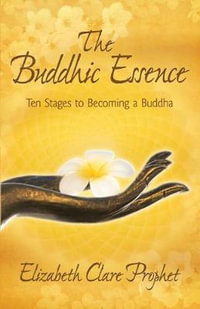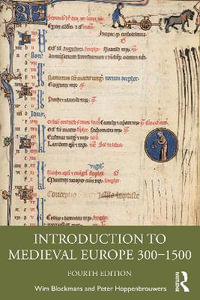
Instant online reading.
Don't wait for delivery!
The Asrama System
The History and Hermeneutics of a Religious Institution
By: Patrick Olivelle
Hardcover | 1 June 1997
At a Glance
292 Pages
22.86 x 15.24 x 2.06
Hardcover
$213.35
or 4 interest-free payments of $53.34 with
orShips in 5 to 7 business days
Industry Reviews
| Abbreviations | p. xi |
| Prologue | p. 3 |
| Introduction | |
| Meaning and Method | p. 7 |
| The Meaning of Asrama | p. 8 |
| The Meaning of Srama | p. 9 |
| The Meaning of Sramana | p. 11 |
| Asrama as a Place and as a Way of Life | p. 16 |
| The Original Meaning of Asrama | p. 19 |
| The Meaning of the Asrama System | p. 24 |
| The System as a Theological Construct | p. 24 |
| The System as a Social Institution | p. 27 |
| Issues of Method | p. 28 |
| The System and the Institutions | p. 28 |
| The Original Formulation and the Origin of the System | p. 30 |
| The Sources | p. 33 |
| The Asrama System and Brahmanical Hermeneutics | p. 34 |
| Background and Context | p. 35 |
| The Vedic Ideal of Religious Life | p. 35 |
| Marriage and Sacrifice | p. 37 |
| Marriage and Procreation | p. 41 |
| The Theology of Debts | p. 46 |
| The Theology of the Great Sacrifices | p. 53 |
| The Socio-Economic Context | p. 55 |
| Rival Views of Religious Life | p. 58 |
| The Emergence of a New World | p. 62 |
| The Householder and the Celibate | p. 64 |
| The Aryan and the Non-Aryan in Indian Asceticism | p. 68 |
| The Early Period | |
| The Origins | p. 73 |
| The Original Formulation | p. 73 |
| Choice of Asrama | p. 74 |
| The Asramas as Permanent and Adult Vocations | p. 78 |
| The Three Celibate Asramas | p. 80 |
| Initiatory Studentship as Preparation for the Asramas | p. 80 |
| Who Was Entitled to Choose an Asrama? | p. 81 |
| The Order of Asramas | p. 82 |
| Controversy and Debate | p. 83 |
| The Legitimacy of the Asrama System | p. 83 |
| The Debate over Relative Superiority | p. 91 |
| Authorship | p. 94 |
| Was the Asrama System a Defense of Orthodoxy? | p. 94 |
| The Asrama System as a Theological Innovation | p. 96 |
| Kapila, Samkhya, and the Asramas | p. 98 |
| The Purpose of the Asrama System | p. 100 |
| Date | p. 101 |
| The Silence of the Ramayana | p. 103 |
| The Silence of the Bhagavad Gita | p. 103 |
| The Pre-History of the Asrama System and the Question of the Three Asramas | p. 106 |
| Ingredients of Change | p. 112 |
| The Third Asrama and the Problem of the Hermit | p. 112 |
| The Special Provisions of Apastamba | p. 113 |
| The Institutions of Old Age | p. 114 |
| The Fourth Asrama and the Time of Renunciation | p. 117 |
| The Time of Renunciation in the Samnyasa Upanisads | p. 117 |
| The Time of Renunciation in Deutero-Baudhayana | p. 119 |
| Renunciation and Old Age | p. 120 |
| Ritual Appropriations of Renunciation | p. 122 |
| Renunciation as the Abandonment of Ritual | p. 122 |
| Renunciation and the Rite In Extremis | p. 123 |
| The Asramas and the Rites of Passage | p. 126 |
| The Classical Period | |
| The Classical Asrama System | p. 131 |
| Description of the Classical System | p. 131 |
| The Hermeneutics of the Classical System | p. 134 |
| The Classical System in the Smrtis | p. 136 |
| Manu | p. 137 |
| Yajnavalkya | p. 142 |
| Visnu | p. 144 |
| Vaikhanasa Smartasutra | p. 145 |
| The Mahabharata | p. 148 |
| The Original System in the Classical Period | p. 151 |
| The Arthasastra | p. 151 |
| The Mahabharata | p. 153 |
| The Puranas | p. 155 |
| Miscellaneous Sources | p. 158 |
| Medieval Theologians | p. 159 |
| Development of the Classical System | p. 161 |
| Classifications of the Asramas | p. 161 |
| Early Classifications of the Four Institutions | p. 162 |
| Formal Classifications of the Asramas | p. 165 |
| Hermeneutics and the Classification of Renouncers | p. 170 |
| Modifications of the Classical System | p. 173 |
| Skipping the Third Asrama | p. 173 |
| Renunciation as an Exception to the Classical System | p. 177 |
| The Asramas and Other Brahmanical Institutions | p. 183 |
| Gender and Asrama | p. 183 |
| Varna and Asrama | p. 190 |
| Status of the Sudras | p. 192 |
| Varna and Renunciation | p. 195 |
| The Asramas and Civil Authority | p. 201 |
| The King as Guardian of the Asramas | p. 201 |
| The Asramas, Ascetics, and the Law | p. 204 |
| Parisad and Asrama | p. 210 |
| Asrama and Other Aspects of Dharma | p. 214 |
| Sets of Four: The Purusarthas and the Asramas | p. 216 |
| The Asrama System in Medieval Theology | p. 220 |
| Anasramin: Obligation to Live in an Asrama | p. 220 |
| Atyasramin: Transcendence of the Asramas | p. 222 |
| The Question of a Fifth Asrama | p. 232 |
| Asrama and the Doctrine of Yuga | p. 234 |
| The Legitimacy of the Asrama System: The Continuing Debate | p. 237 |
| Epilogue | p. 244 |
| Bibliography | p. 247 |
| Index | p. 263 |
| Table of Contents provided by Syndetics. All Rights Reserved. |
ISBN: 9780195083279
ISBN-10: 019508327X
Published: 1st June 1997
Format: Hardcover
Language: English
Number of Pages: 292
Audience: Professional and Scholarly
Publisher: Oxford University Press USA
Country of Publication: GB
Dimensions (cm): 22.86 x 15.24 x 2.06
Weight (kg): 0.59
Shipping
| Standard Shipping | Express Shipping | |
|---|---|---|
| Metro postcodes: | $9.99 | $14.95 |
| Regional postcodes: | $9.99 | $14.95 |
| Rural postcodes: | $9.99 | $14.95 |
Orders over $79.00 qualify for free shipping.
How to return your order
At Booktopia, we offer hassle-free returns in accordance with our returns policy. If you wish to return an item, please get in touch with Booktopia Customer Care.
Additional postage charges may be applicable.
Defective items
If there is a problem with any of the items received for your order then the Booktopia Customer Care team is ready to assist you.
For more info please visit our Help Centre.
























